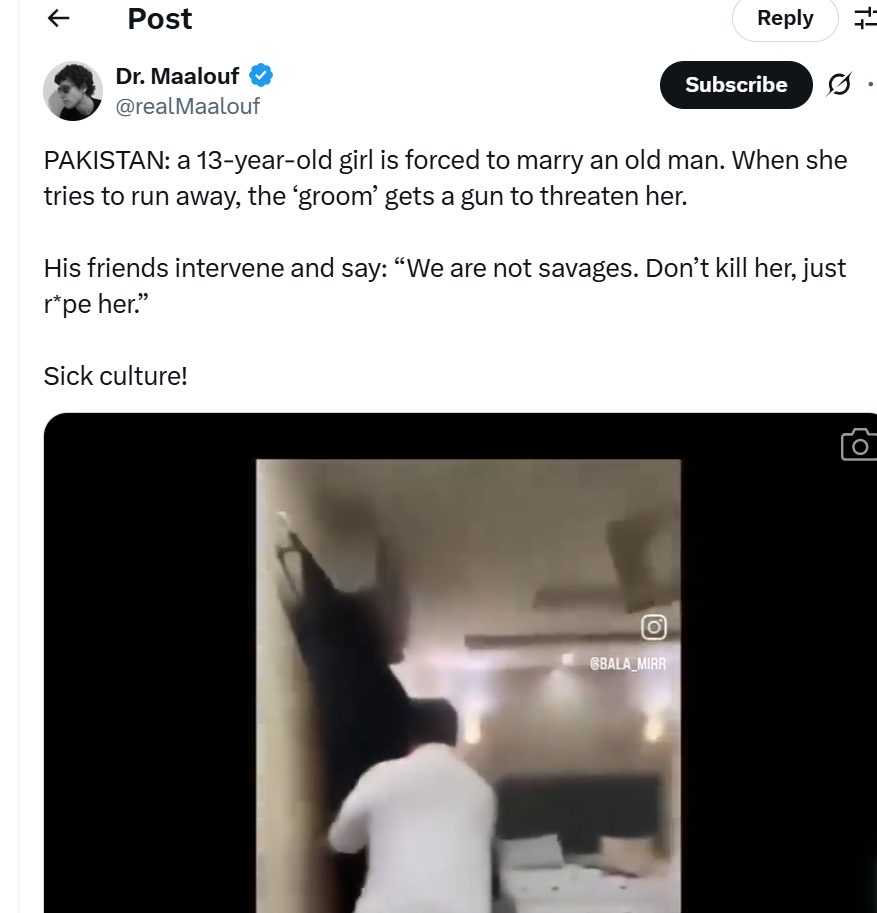
The image attached to the post shows two individuals, one of whom appears to be a young girl with long hair, dressed in a white outfit, being held by an older man in a similar white outfit. The setting appears to be a domestic space, with a bed and household items visible in the background, suggesting the incident may have occurred in a private home.
 Context of Child marriage in Pakistan
Context of Child marriage in PakistanChild marriage remains a significant issue in pakistan, despite legal efforts to curb the practice. According to the UNFPA (United Nations population Fund), one in three girls in pakistan is married before the age of 18, a statistic rooted in deeply entrenched cultural and traditional practices. These marriages =marriages often deprive girls of their childhood, education, and future prospects, while exposing them to higher risks of domestic violence, abuse, and health complications, such as at-risk pregnancies and sexually transmitted infections.
Legally, pakistan has made strides to address the issue. The Child marriage Restraint Act of 1929 set the legal marriage age at 18 for boys and 16 for girls, but amendments in recent years, including the Sindh Child marriage Restraint Act of 2014 and a new bill passed in 2025, have raised the minimum age to 18 for both genders in certain regions, including Islamabad. Violators can face imprisonment and fines, and courts can issue injunctions to prevent child marriages. However, enforcement remains inconsistent, particularly in rural areas where traditional practices often supersede legal frameworks. The pakistan Penal Code also criminalizes practices like giving a female in marriage to settle disputes (e.g., badla-e-sulh, wanni, or swara), with penalties including 3-7 years of imprisonment and fines.
Recent incidents, such as the arrest of a 70-year-old man in Swat for marrying a 13-year-old girl in May 2024, and the prevention of a 12-year-old girl’s marriage to a 72-year-old man in Charsadda, highlight that child marriage persists despite these laws. In both cases, the police intervened, arresting the grooms, officiants, and sometimes the parents involved, but the girl’s father often escapes accountability, pointing to gaps in enforcement and societal complicity.




 click and follow Indiaherald WhatsApp channel
click and follow Indiaherald WhatsApp channel